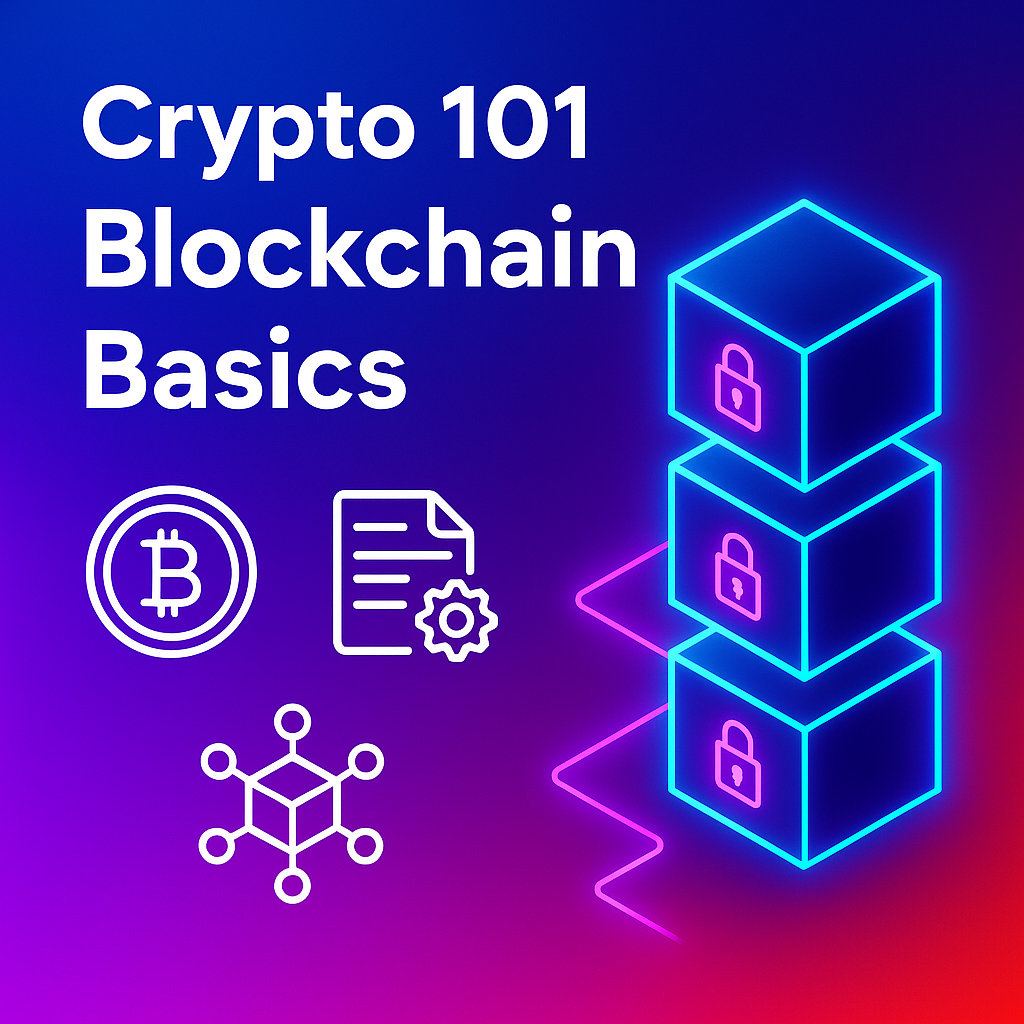
The world is buzzing about crypto, but at its core everything begins with one invention: the blockchain. To understand why cryptocurrencies matter, you first need to understand the technology that makes them possible.
What is a Crypto?
Crypto software is a digital ledger, also called a blockchain, that records transactions in a sequential way that is:
-
Decentralized – no single bank or company owns it.
-
Immutable – once data is recorded, it can’t be changed.
-
Auditable – every transaction is transparent and can be verified.
Think of it like a chain of digital “blocks,” each stamped with a cryptographic signature. Once a block is confirmed by the network, it becomes a permanent part of the chain.
What are Cryptocurrencies?
Cryptocurrencies are digital tokens that live on blockchains. They can be:
-
A medium of exchange (like Bitcoin).
-
A programmable currency for apps and services (like PulseChain).
-
A utility coin (access to a service).
-
A security coin (investment product).
Their value comes from supply and demand, community adoption, and the utility of the network.
Smart Contracts: The Brains of Blockchain
A smart contract is like a vending machine for code: you put in a condition, and if it’s met, the blockchain executes the result automatically.
-
They can issue tokens, power apps (dApps), run voting systems, or manage wallets.
-
Once deployed, they run exactly as programmed—no middleman needed.
This is why Ethereum and PulseChain aren’t just “currencies”—they’re platforms for building entire economies.
Decentralized Apps and IPFS on PulseChain
PulseChain isn’t just a financial network — it also integrates with the InterPlanetary File System (IPFS), a peer-to-peer storage and distribution protocol.
Instead of relying on centralized servers or app stores, IPFS allows you to download apps and run them locally on your device, directly from the blockchain’s distributed network.
Benefits of this model:
-
Censorship Resistance – No single company can take your app offline.
-
Security – Code and data are hashed and verified across the network, ensuring integrity.
-
Efficiency – Files are fetched from the nearest peers, speeding up downloads and reducing bottlenecks.
-
Ownership – You control your access; apps can’t be revoked or altered without consensus.
Recommended dApps to download and run locally on PulseChain:
-
bridge.pulsechain.com → The official PulseChain bridge for moving assets across chains.
-
app.pulsex.com → PulseX, the decentralized exchange for trading assets on PulseChain.
-
go.hex.com → Access HEX staking and interact directly with the HEX smart contract.
-
launchpad.pulsechain.com → Tools for onboarding, validator setup, and PulseChain resources.
By combining smart contracts with IPFS hosting, PulseChain enables truly decentralized applications (dApps) where both the logic and the data are free from corporate control.
How Blockchains Stay Secure: Consensus
To decide which transactions are valid, blockchains use consensus algorithms:
-
Proof of Work (PoW): "Miners" solve puzzles with computing power and by burning electricity (used by Bitcoin).
-
Proof of Stake (PoS): Validators lock up or stake coins for the right to confirm blocks (PulseChain has over 50,000 validators).
PoS is faster, more energy-efficient, and scalable—making it the choice for the next generation of blockchains.
Centralized vs. Decentralized Exchanges (and Bridges)
To buy or trade crypto, you’ll use an exchange or a bridge:
-
Centralized Exchanges (CEX): Work like banks. Convenient, but they hold your keys (and your coins). There’s risk of frozen accounts, hacks, or restrictions. They often require identity verification (KYC) and charge transaction fees.
-
Decentralized Exchanges (DEX): Peer-to-peer. You keep your keys, your coins, and your control. Trades cost “gas fees” and may take a bit longer, but you don’t give up custody of your funds.
-
Bridges: Special protocols that move assets between blockchains.
-
Native Bridge (bridge.pulsechain.com) → Most secure, little counterparty risk, but requires ETH gas.
-
LibertySwap (libertyswap.finance) → Low-fee option that abstracts fees inside the swap. Supports Base, Solana, BNB, and Arbitrum.
-
0xCoast (0xcoast.com) → Fiat on-ramp for beginners with fixed low fees, requires KYC.
-
Pulse Threads Tip: Not your keys, not your coins — and not your bridge, not your chain. Always choose security over convenience when moving assets.
Crypto Wallets: Hot vs. Cold
Your wallet is where you store your keys and gives you access to the funds on-chain:
-
Hot Wallets → connected to the internet, easy to use, higher risk.
-
Cold Wallets → hardware devices, offline, most secure.
Examples:
-
Internet Money Wallet – designed for PulseChain. Available as an app and a browser extension.
-
MetaMask – browser extension and mobile app. Must add PulseChain as custom RPC network.
-
Brave Wallet – built into the Brave web browser. Must add PulseChain as custom RPC network.
Getting Started Safely
-
Research – Read whitepapers, evaluate the developers, check adoption potential, and study the project.
-
Choose a Wallet – Protect your keys above all else.
-
Pick an Exchange or Bridge – Choose a secure, legal, and reputable entry point.
-
Start Small – Buy your first crypto and learn as you go. We recommend HEX on PulseChain. (hex.com)
Final Word
At its heart, blockchain is about freedom and accountability. It removes middlemen, puts ownership in your hands, and opens the door to innovation across every industry—from finance to gaming, healthcare to art.
Understanding these basics will give you the confidence to take your first steps into crypto safely.
Remember: knowledge is the first investment you make.







